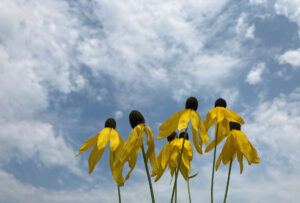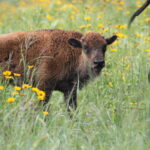In addition to looking great and performing exceptionally well across the landscape of the upper Midwest, local-origin native species also provide a long list of ecosystem benefits. We’ve summarized a few of our favorite benefits here to stress the importance of restoring native vegetation in open spaces, park land, and beyond.
Improved Infiltration –
Native plant roots are incredibly good at working their way through the soil and improving even compacted soils. Each year, some of the roots die back, while others continue their growth into the earth. When these tiny root fibers decay, it creates open pockets in the soil for ground water to seep into – this helps reduce runoff. Native species are also well-known for their role in improving soil quality, assisting in filtering groundwater and sequestering carbon.
Preventing Soil Erosion –
The extensive root systems of native plants, mentioned above, also assist with preventing soil erosion. The mass of above-ground growth works well to slow and displace water flowing over the surface while the roots anchor the soil in place. This combination is very effective at controlling the erosion of our precious top soil. The above ground growth is also great for acting as a living snow fence, helping improve safety along trails and roadways during the winter months. Native herbaceous, shrub, and tree material helps trap and slow blowing snow if above-ground growth is left standing over winter months.
Food and Cover for Wildlife –
Native plants and native wildlife have coevolved to each other’s benefit. While we may not be able to bring back free-roaming American Bison, native plants provide what native wildlife need, when they need it. In exchange, pollinators help ensure native plants reproduce, produce seeds, and continue their growth cycle. Pollination creates seeds, these seeds feed a huge variety of native wildlife, and help them survive our tough winters. The dense and often tall stems bend in the winter snow and provide cozy homes to local wildlife in the winter. In the summer, the native growth helps shade the soil surface and keep it cooler than out in the open sun, creating an excellent refuge for pollinators, birds, and other small critters.


